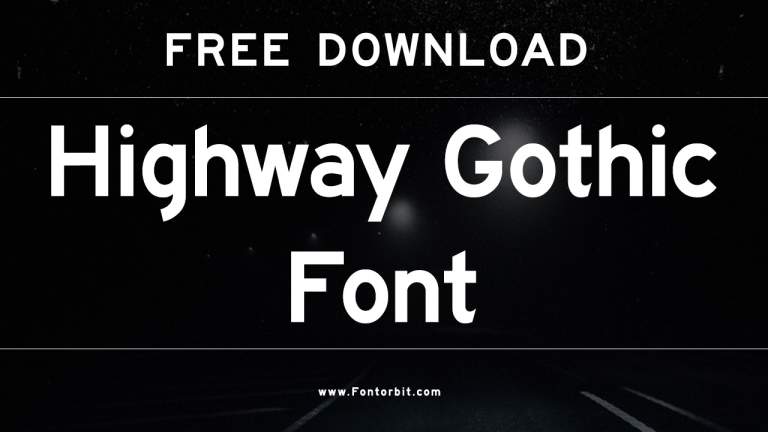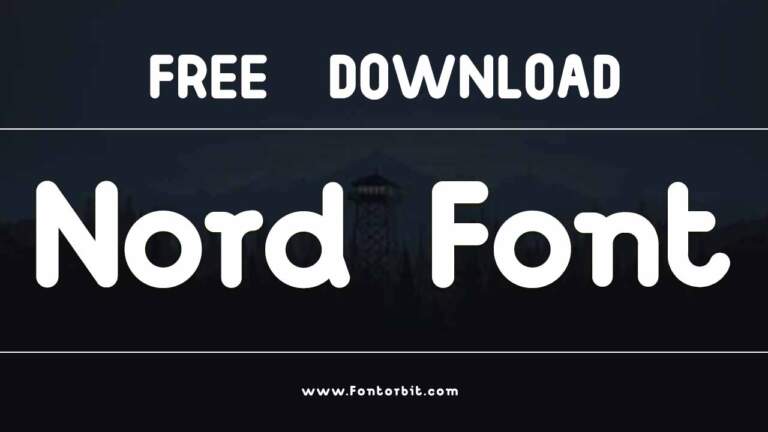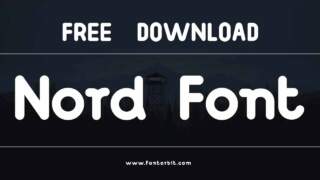Cinzel Font is a versatile, elegant typeface inspired by ancient Roman capitals, perfect for achieving a classic, sophisticated, and impactful look in headings, logos, and display text. Its design offers excellent readability and a timeless aesthetic, making it a go-to choice for designers seeking a touch of refined grandeur.
Ever stared at a blank canvas, logo brief, or website layout, needing a font that screams sophistication without sacrificing clarity? Finding that perfect typeface can feel like searching for a needle in a haystack, especially when you want something with historical gravitas and modern appeal. Many fonts look striking but are a nightmare to read, or they’re readable but lack that distinctive character. It’s a common frustration for anyone trying to make their designs stand out with timeless elegance. But what if there was a font designed to bridge that gap, offering both breathtaking beauty and practical usability? Get ready to discover your new favorite design weapon. We’ll walk you through everything you need to know about Cinzel Font, how to use it effectively, and why it deserves a prime spot in your font library.
Unveiling Cinzel Font: A Tribute to Timeless Typography
Cinzel Font is a masterful creation that draws deep inspiration from the inscriptions found on ancient Roman monuments. Think of the majestic lettering carved into stone, radiating authority, history, and enduring style. Designer Natanael Gama took this classic aesthetic and reimagined it for the digital age, resulting in a typeface that’s both historically grounded and beautifully contemporary. It’s not just another font; it’s a design tool that brings a sense of grandeur and legitimacy to your projects.
Its sharp serifs and balanced proportions give it a distinct personality. Unlike some overly ornate historical revivals, Cinzel maintains a remarkable level of readability, making it suitable for more than just decorative titles. It’s like having a piece of ancient Rome elegantly translated for your modern design needs.
The Anatomy of Cinzel: What Makes It Special?
At its core, Cinzel is a display font, meaning it truly shines when used at larger sizes where its distinctive features can be appreciated. However, its clever design allows it to maintain legibility even at smaller sizes, a quality that significantly broadens its application.
- Classic Roman Inspiration: The primary influence is the lettering from the Roman empire, specifically the inscriptions on monuments. This gives it an inherent sense of authority and timelessness.
- Sharp Serifs: Cinzel features high-contrast, sharp serifs that add a touch of elegance and precision. These serifs are not decorative frills but integral to the font’s balanced structure.
- Geometric Clarity: Despite its historical roots, the letterforms exhibit a remarkable geometric purity. This balance makes it feel clean and modern.
- Versatile Weights: Cinzel is available in several weights, typically including regular, bold, and black, and often a lightweight variant. This allows for flexibility in creating visual hierarchy.
- Ligatures and Alternates: Advanced versions or variations of Cinzel might include ligatures (combinations of letters that form a single glyph) and alternate characters, offering designers even more expressive possibilities.
This combination of traits makes Cinzel a powerful tool for designers who want to evoke a sense of prestige, history, or classical beauty.
Why Cinzel Font is Your Essential Design Tool
In the vast landscape of typography, certain fonts rise to prominence because they offer a unique blend of aesthetics, functionality, and versatility. Cinzel Font is one such gem. It’s not merely a font; it’s a strategic choice that can elevate your design projects from ordinary to extraordinary. Let’s explore why it’s become so indispensable for so many creatives.
Elevating Branding and Logos
When it comes to creating a memorable brand identity, the font you choose for your logo is paramount. Cinzel Font offers a distinctive advantage:
- Sense of Heritage and Trust: Using Cinzel can imbue a brand with a feeling of established history, reliability, and timeless quality. This is particularly effective for brands in luxury goods, education, law, historical preservation, or anything aiming for a gravitas-filled image.
- Sophistication and Prestige: Its elegant lines and classical proportions naturally convey a sense of sophistication. This makes it an excellent choice for premium products or services where an air of exclusivity is desired.
- Memorability: The distinct character of Cinzel makes logos that use it stand out. It’s memorable without being overly trendy, ensuring long-term relevance.
For instance, a law firm might use Cinzel for its logo to project a sense of established authority and integrity. A university department focused on classical studies would find it an obvious yet effective choice. Even a modern artisanal cafe could use it to add a touch of refined quality to their branding.
Perfect for Headlines and Display Text
The inherent display qualities of Cinzel make it a natural fit for impactful headlines, titles, and other prominent text elements:
- Attention-Grabbing: The sharp serifs and strong structure of Cinzel commands attention, drawing the reader’s eye to key information immediately.
- Creating Visual Hierarchy: When used for headings, Cinzel can effectively create a clear visual hierarchy, separating important titles from body text and guiding the reader through your content.
- Adding a Touch of Elegance: Whether it’s a blog post title, a website banner, or a print advertisement, Cinzel adds an immediate touch of refined elegance that can significantly boost the perceived quality of the design.
Imagine a wedding invitation suite using Cinzel for the main lettering – it immediately sets a tone of formal celebration and classic romance. Or a documentary film title card using Cinzel to hint at historical depth and importance.
Readability: The Unexpected Strength
While often celebrated for its display qualities, a significant strength of Cinzel is its surprisingly good readability, even in smaller sizes. This is a testament to the careful design and balanced proportions.
- Clarity in Letterforms: Each letter is clearly defined, with sufficient spacing and distinct shapes that prevent them from blurring together.
- Balanced Stroke Contrast: The contrast between thick and thin strokes is managed intelligently, ensuring legibility without becoming too delicate or too heavy.
- Well-Spaced Characters: The kerning (space between specific pairs of letters) and overall character spacing are generally well-executed, contributing to a smooth reading experience.
This makes it suitable for more than just one-off headlines. It can be used effectively for subheadings, pull quotes, and even short paragraphs in print materials where space is limited and impact is key. For websites, it’s often best paired with a highly readable sans-serif or serif font for body text, but its usage in navigation menus or short informational text blocks can also be effective.
Where to Find and Use Cinzel Font
Accessing and utilizing Cinzel Font is straightforward, thanks to its widespread availability, particularly on platforms that support open-source fonts. This ease of access makes it a practical choice for designers and businesses of all sizes.
Official Sources and Licensing
The most reliable place to find the official Cinzel font families is often through Google Fonts. Google Fonts is a free service that hosts a vast library of open-source fonts, making them accessible for virtually any project, personal or commercial.
- Google Fonts: You can download the various weights of Cinzel directly from the Google Fonts website. This is the primary and most trusted source. The licensing is typically under the SIL Open Font License, which is very permissive and allows for commercial use without charge.
- Other Font Repositories: You might find variations or older versions on other font sites, but always ensure you’re obtaining the font from a reputable source to avoid licensing issues or corrupted files.
Implementing Cinzel in Your Projects
Once downloaded, integrating Cinzel into your design workflow is simple:
- Installation: On most operating systems (Windows, macOS), you can install fonts by simply double-clicking the font file (e.g., a .ttf or .otf file) and clicking “Install.”
- Design Software: After installation, Cinzel will appear in the font menus of your design software, such as Adobe Photoshop, Illustrator, InDesign, Figma, Sketch, or even Microsoft Word and Google Docs.
- Web Use: For websites, you can use the CSS `@font-face` rule to embed Cinzel directly from Google Fonts or by hosting the font files yourself. Google Fonts provides the necessary code snippets for easy web implementation.
This accessibility ensures that Cinzel can be a part of your toolkit, whether you’re working on a personal blog, a professional branding project, or a large-scale corporate identity.
Cinzel Font vs. Similar Typefaces
As designers, we often compare fonts to understand their nuances and find the best fit for a project. While Cinzel stands out, it’s helpful to see how it compares to other typefaces with similar characteristics. This comparison helps in making informed decisions.
Cinzel vs. Trajan Pro
Trajan Pro is perhaps the most direct ancestor and close cousin to Cinzel. Both are inspired by ancient Roman inscriptions, specifically Roman square capitals. They share a similar aesthetic of classic grandeur and authority.
| Feature | Cinzel | Trajan Pro |
|---|---|---|
| Inspiration | Roman square capitals, with modern interpretation | Roman square capitals, often seen on titling and inscriptions |
| Aesthetic | Elegant, sophisticated, slightly more geometric clarity | Classic, authoritative, monumental |
| Readability | Generally good for display, some weights can work for shorter text | Excellent for display, generally not recommended for body text due to uniformity |
| Availability | Widely available, especially on Google Fonts (free) | Originally a commercial font, later available on Adobe Fonts and as part of some Adobe products (subscription needed) |
| Specifics | Often has multiple weights and variations, developed with digital use in mind. | Known for its pure, unadorned Roman capital forms. |
Key Difference: While both are superb for evoking classical themes, Cinzel’s design feels a bit more refined and possesses a clearer geometric sensibility that can sometimes make it feel more adaptable. Trajan Pro often feels more purely monumental and is almost exclusively a display font, whereas Cinzel can sometimes be stretched to sub-heading use with careful application.
Cinzel vs. Playfair Display
Playfair Display is a popular serif font that also aims for elegance but is rooted in the transitional and modern styles of serif typography, rather than ancient Roman inscriptions. It’s a high-contrast serif, similar in its dramatic thick and thin strokes but distinctly different in its historical origin.
| Feature | Cinzel | Playfair Display |
|---|---|---|
| Inspiration | Ancient Roman inscriptions | 18th-century typography (transitional/modern serifs) |
| Aesthetic | Classical, monumental, ancient grandeur | Elegant, sophisticated, romantic, high-fashion |
| Serif Style | Sharp, angular, geometric | Bracketed, often more delicate and flowing |
| Readability | Good for display, some shorter text use possible. | Excellent for display and even body text in print and web due to its designed comfort. |
| Overall Feel | Ancient authority and timelessness | Modern elegance and stylistic flair |
Key Difference: Cinzel embodies an ancient, authoritative elegance, while Playfair Display offers a more contemporary, sophisticated, and sometimes romantic elegance. If you want a touch of historical gravitas, Cinzel is your choice. If you’re aiming for modern-pastoral or high-fashion chic, Playfair Display might be better.
Cinzel vs. Cormorant Garamond
Cormorant Garamond is another elegant serif font, inspired by the classic Garamond typefaces. It offers a more traditional, bookish elegance with fine details and delicate proportions.
| Feature | Cinzel | Cormorant Garamond |
|---|---|---|
| Inspiration | Ancient Roman inscriptions | Garamond typefaces (Renaissance/Old-style serifs) |
| Aesthetic | Monumental, authoritative, classical | Traditional, scholarly, refined, delicate |
| Serif Style | Sharp, angular, high-contrast | Subtle, graceful, often with a slight slant |
| Readability | Best for headlines, some display use. | Excellent for body text, also good for headlines where subtlety is key. |
| Overall Feel | Timeless grandeur and strength | Classic literary sophistication and grace |
Key Difference: Cinzel is bold and commanding, evoking ancient power. Cormorant Garamond is softer, more academic, and carries a refined, literary feel. Where Cinzel shouts “historical importance,” Cormorant Garamond whispers “classic literature.”
Practical Tips for Using Cinzel Font Effectively
Now that you know about Cinzel’s origins and how it stacks up against other popular fonts, let’s dive into practical advice on making it work wonders in your designs. Using a font effectively isn’t just about picking it; it’s about understanding its strengths and weaknesses to maximize its impact.
Pairing Cinzel with Other Fonts
Cinzel is a strong, characterful font, which means it often pairs best with simpler, more neutral fonts to let it shine without competing. The goal is to create harmony, not chaos.
- Sans-Serif Companions: For digital projects and modern branding, pair Cinzel with a clean, geometric sans-serif. Think Montserrat, Lato, Open Sans, or Raleway. These fonts provide a modern contrast that highlights Cinzel’s classic appeal while ensuring body text remains highly readable. For example, use Cinzel for your main heading and Lato for body copy.
- Subtle Serif Partners: If you’re working on a print project or seeking a more traditionally elegant feel, a versatile serif like Merriweather or Lora can work. However, ensure the pairing doesn’t become overly busy. The aim is often for Cinzel to be the star, with the secondary serif providing support.
- Avoid Similar Display Fonts: Unless you’re an expert in typographic pairing, avoid using Cinzel alongside other highly distinctive display fonts. This can lead to a cluttered and unprofessional look.
Weight and Size Considerations
Cinzel’s impact is heavily influenced by how you use its weight, size, and spacing.
- Headlines: Cinzel Regular or Bold is usually perfect for headlines. Ensure generous letter spacing (tracking) if you want a more open, airy, and sophisticated feel, especially for shorter headlines. For longer ones, tighter tracking might improve readability.
- Subheadings: Cinzel oftentimes works well for subheadings, particularly if they are short and punchy. A lighter weight than the main heading can create a nice gradient of importance.
- Body Text: This is where you need to be cautious. Cinzel is not ideal for large blocks of body text due to its high contrast and sharp serifs. It can cause eye strain over long reading periods. If you must use it for shorter text snippets (like pull quotes or captions), make sure the size is large enough and track it slightly wider for comfort.
Spacing and Layout Matters
The negative space around Cinzel is just as important as the letters themselves.
- Ample Whitespace: Cinzel fonts benefit greatly from generous whitespace. This allows the letterforms to breathe and ensures they don’t feel cramped or overwhelming.
- Kerning: While most digital versions of Cinzel are well-kerned, always give an extra look. Sometimes, specific letter pairs might need manual adjustment for perfect harmony.
- Line Height (Leading): When using Cinzel for any text that requires more than a single line, ensure adequate line spacing. Too little leading will make it difficult to follow lines of text, especially with its sharp terminals.
- Alignment: Cinzel often looks stunning in centered text layouts for titles or invitations, playing into its formal and grand aesthetic. Left-aligned text is also a safe bet for readability.
When to Use Cinzel (And When Not To)
Ideal Use Cases:
- Logos and branding for luxury, legal, educational, historical, or heritage-focused businesses.
- Wedding invitations, formal event stationery.
- Book covers and chapter titles aiming for a classic or historical theme.
- Film and theatre posters






Leave a Comment